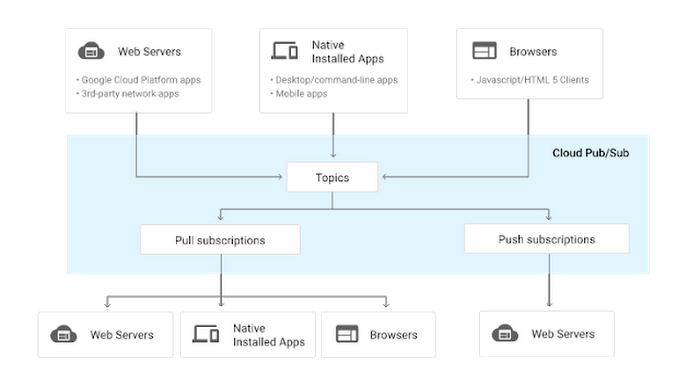So, we stumbled upon this incredibly useful tool called GCP App Engine that is absolutely perfect for building scalable web applications. This bad boy is designed to make our lives easier by taking care of all the infrastructure and scalability worries, allowing us to focus on what we do best – creating amazing web applications. With GCP App Engine, we can quickly deploy our applications, handle heavy traffic loads, and ensure our apps are running smoothly even during peak periods. Say goodbye to manual scaling and hello to effortless scalability with GCP App Engine!
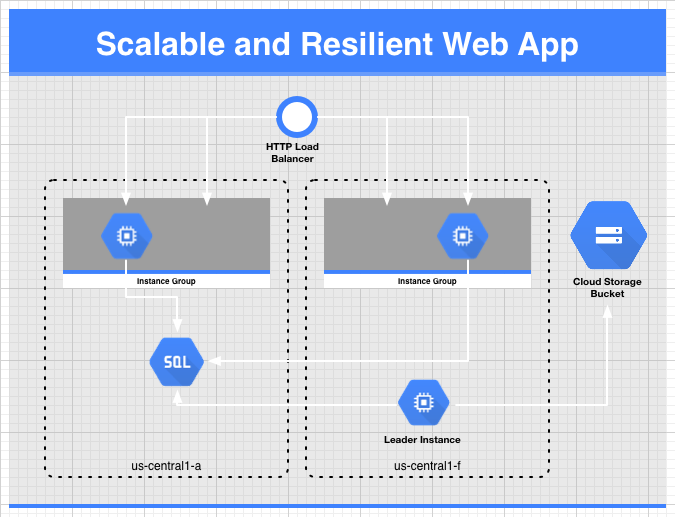
Choosing GCP App Engine
Understanding the benefits of GCP App Engine
When it comes to building scalable web applications, choosing the right cloud platform is essential. GCP App Engine offers a range of benefits that make it a strong contender for this purpose. One of the key advantages of GCP App Engine is its automatic scaling feature. This means that your application can handle sudden increases in traffic without any manual intervention. Additionally, GCP App Engine offers a range of development tools and libraries that make it easier to build and deploy applications. With features like built-in security, easy integration with other GCP services, and cost optimization, GCP App Engine provides a robust and scalable platform for web application development.
Comparing with other cloud platforms
When considering which cloud platform to choose for building scalable web applications, it’s important to evaluate the options available. GCP App Engine stands out among its competitors in several ways. One of the key advantages of GCP App Engine is its automatic scaling feature, which allows your application to handle increases in traffic seamlessly. This sets it apart from other platforms that may require manual scaling. Additionally, GCP App Engine offers a range of development tools and libraries that make it easier to build and deploy applications. Compared to other cloud platforms, GCP App Engine also provides excellent integration with other GCP services, making it a comprehensive and efficient choice for web application development.
Exploring the scalability features
Scalability is a crucial aspect of web application development, as it ensures that your application can handle increasing amounts of traffic without compromising performance. GCP App Engine offers a range of features that allow you to build scalable applications. Automatic scaling is one of the key features of GCP App Engine, which automatically adjusts the number of instances running your application based on the incoming traffic. This means that your application can handle sudden spikes in traffic without any manual intervention. Additionally, GCP App Engine offers traffic splitting, which allows you to perform A/B testing and gradually roll out new features. With these scalability features, GCP App Engine provides a robust platform for building highly scalable web applications.
Considering the cost efficiency
Cost efficiency is an important consideration when choosing a cloud platform for web application development. GCP App Engine offers several cost-saving benefits that make it an attractive option. Firstly, GCP App Engine’s automatic scaling feature ensures that you are only charged for the resources you actually use. This means that during periods of low traffic, you won’t be paying for idle resources. Additionally, GCP App Engine offers tools for monitoring your application’s resource usage, allowing you to optimize your costs based on your application’s needs. With cost optimization features and pay-as-you-go pricing, GCP App Engine provides a cost-effective solution for building scalable web applications.
Getting Started with GCP App Engine
Creating a project on Google Cloud Platform
To get started with GCP App Engine, the first step is to create a project on the Google Cloud Platform. This can be done by accessing the GCP Console and following the guided steps to create a new project. Once the project is created, you can access its resources and services from the GCP Console.
Enabling App Engine
After creating a project on the Google Cloud Platform, the next step is to enable the App Engine service. This can be done by navigating to the “App Engine” section in the GCP Console and following the instructions to enable it for your project. Enabling App Engine allows you to create and deploy applications on the platform.
Understanding App Engine deployment options
GCP App Engine offers several deployment options to choose from, depending on your application’s requirements. The two main deployment options are the standard environment and the flexible environment. The standard environment provides a fully-managed platform where you can deploy and run your applications without worrying about infrastructure management. The flexible environment, on the other hand, offers more flexibility and control, allowing you to customize the underlying infrastructure. Understanding these deployment options is crucial in deciding how to deploy your application on GCP App Engine.
Setting up the development environment
Before you start developing your web application with GCP App Engine, it’s important to set up your development environment. This involves installing the necessary tools and libraries, such as the Google Cloud SDK, which provides command-line tools for interacting with GCP services. Additionally, you may need to configure your development environment to integrate with other tools or frameworks that you plan to use in your application. Setting up the development environment ensures that you have all the necessary tools and configurations in place for a smooth development process.
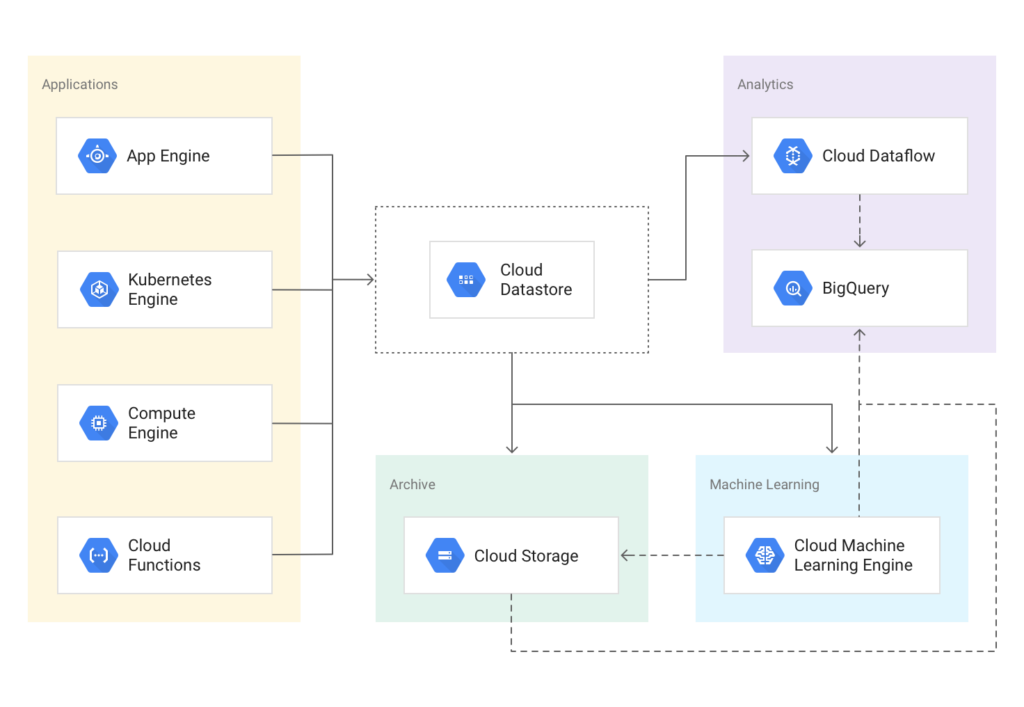
Designing for Scalability
Understanding the principles of scalable web applications
Designing for scalability is an essential aspect of building web applications that can handle increasing amounts of traffic. There are several principles that can guide you in designing scalable web applications. Firstly, it’s important to consider horizontal scalability, which involves distributing the workload across multiple instances of your application. This allows your application to handle increased traffic by adding more instances as needed. Additionally, designing for scalability involves choosing the right data storage options, designing a scalable architecture, and implementing efficient caching strategies. By following these principles, you can ensure that your web application is built to scale.
Choosing the right data storage options
Choosing the right data storage options is a crucial aspect of designing scalable web applications. GCP App Engine offers several data storage options that can be used depending on your application’s requirements. Cloud Datastore is a NoSQL document database that provides high scalability and automatic replication. Cloud SQL, on the other hand, is a fully-managed relational database service that offers high availability and automatic scaling. Choosing the right data storage option involves considering factors like data structure, scalability requirements, and performance needs. By selecting the appropriate data storage option, you can ensure that your application can handle increasing amounts of data without compromising performance.
Designing a scalable architecture
Designing a scalable architecture is key to building web applications that can handle increasing amounts of traffic. There are several architectural patterns and strategies that can be employed to achieve scalability. One common approach is the use of microservices, where the application is divided into smaller, independently deployable services. This allows for flexibility and scalability, as each service can be scaled independently based on its specific requirements. Additionally, employing a message queue system, such as Pub/Sub, can also enhance scalability by decoupling components and allowing them to communicate asynchronously. By designing a scalable architecture, you can ensure that your web application can handle increasing traffic efficiently.
Implementing efficient caching strategies
Efficient caching strategies can greatly improve the performance and scalability of your web application. Caching involves storing frequently accessed data in memory, which allows for faster retrieval and reduces the load on the backend services. GCP App Engine offers several options for implementing caching strategies. Cloud Memorystore is a fully managed in-memory data store that provides high performance and scalability. Additionally, you can also leverage edge caching using a Content Delivery Network (CDN) like Cloud CDN. By implementing efficient caching strategies, you can reduce the response times of your web application and improve its overall scalability.
Developing a Web Application with GCP App Engine
Creating an App Engine application
To start developing a web application with GCP App Engine, the first step is to create an App Engine application. This can be done by following the documentation and guidelines provided by Google. Creating an App Engine application sets up the necessary infrastructure and resources for your application to run on GCP App Engine.
Defining the application structure
Defining the structure of your web application is an important step in the development process. This involves organizing your application into logical components and modules, and defining the relationships between them. By creating a clear and well-defined application structure, you can ensure that your codebase is maintainable and scalable. Additionally, defining the application structure also allows for easier collaboration among developers working on the project.
Building the frontend using popular frameworks
Building the frontend of your web application is an important aspect of the development process. GCP App Engine allows you to build the frontend using popular frontend frameworks like Angular, React, or Vue.js. These frameworks provide a range of tools and libraries that make it easier to develop user interfaces and frontend functionality. By leveraging these frameworks, you can build a modern and responsive frontend for your web application.
Implementing backend logic using App Engine services
Implementing the backend logic of your web application involves writing the server-side code that handles requests and processes data. GCP App Engine provides several services that can be used for implementing backend logic, such as Cloud Functions, Cloud Run, and Cloud Endpoints. These services allow you to write serverless functions, deploy containerized applications, and create APIs respectively. By utilizing these services, you can implement the backend logic of your web application efficiently and securely.
Scaling Techniques in GCP App Engine
Understanding automatic scaling
Automatic scaling is a key feature of GCP App Engine that allows your web application to handle increases in traffic without manual intervention. GCP App Engine automatically adjusts the number of instances running your application based on the incoming traffic. This ensures that your application can scale up or down rapidly based on demand. By understanding how automatic scaling works, you can optimize your application’s performance and ensure that it can handle sudden spikes in traffic effectively.
Configuring scalability settings for better performance
Configuring scalability settings is an important step in optimizing the performance of your web application. GCP App Engine provides several configuration options that allow you to fine-tune the scalability of your application. These options include setting the minimum and maximum number of instances, configuring the scaling algorithm, and adjusting the instance class. By configuring these settings appropriately, you can optimize the performance of your application and ensure that it can handle varying levels of traffic efficiently.
Utilizing traffic splitting for A/B testing
Traffic splitting is a powerful technique that allows you to perform A/B testing and gradually roll out new features in your web application. GCP App Engine provides built-in support for traffic splitting, which allows you to direct a percentage of your traffic to different versions of your application. This enables you to test new features or updates on a subset of your users before rolling them out to everyone. By utilizing traffic splitting, you can gather valuable feedback, improve your application’s performance, and ensure a smooth user experience.
Handling sudden spikes in traffic
Handling sudden spikes in traffic is a critical aspect of scaling web applications. GCP App Engine’s automatic scaling feature helps in seamlessly handling spikes in traffic by dynamically adjusting the number of instances. However, there are additional techniques that can further enhance the ability to handle sudden spikes. These techniques include using load balancers to distribute traffic, optimizing the application’s code and database queries, and implementing caching strategies. By employing these techniques, you can ensure that your web application can handle sudden spikes in traffic efficiently and without any performance degradation.
Monitoring and Debugging GCP App Engine Applications
Setting up application monitoring
Setting up application monitoring is essential for ensuring the smooth operation of your web application. GCP App Engine provides various monitoring tools and services to help you track the performance and health of your application. Stackdriver Monitoring, for example, allows you to set up custom dashboards, create alerts, and visualize important metrics. With monitoring in place, you can proactively identify and address any issues that may affect the performance or availability of your web application.
Analyzing logs and error reporting
Analyzing logs and error reporting is crucial for understanding the behavior of your web application and diagnosing any issues. GCP App Engine provides tools like Stackdriver Logging and Stackdriver Error Reporting, which allow you to view and analyze your application’s logs and error reports. These tools provide insights into the behavior of your application, including information about request logs, system logs, and application errors. By analyzing logs and error reports, you can gain valuable insights into the performance and reliability of your web application.
Debugging techniques for App Engine
Debugging is an important aspect of developing and maintaining web applications. GCP App Engine offers several debugging techniques that can help you identify and resolve issues in your application. Tools like Stackdriver Debugger allow you to set breakpoints and inspect the state of your application during runtime. Additionally, GCP App Engine integrates with popular development tools like Cloud Source Repositories and Cloud Deployment Manager, which provide additional debugging and troubleshooting capabilities. By utilizing these debugging techniques, you can quickly identify and fix issues in your web application.
Implementing performance optimizations
Implementing performance optimizations is crucial for ensuring that your web application runs smoothly and efficiently. GCP App Engine provides several tools and techniques that can be used to optimize the performance of your application. These include techniques like using efficient algorithms, optimizing database queries, implementing caching strategies, and leveraging tools like Cloud Profiler. By identifying and implementing performance optimizations, you can ensure that your web application delivers a fast and responsive experience to its users.
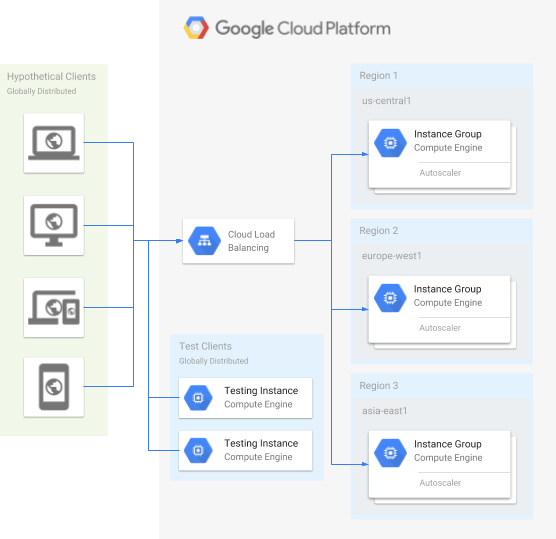
Securing GCP App Engine Applications
Understanding security considerations
Security is a critical aspect of building web applications. GCP App Engine offers several security features and best practices that can help you secure your application. These include securing access controls and permissions, implementing secure authentication and authorization mechanisms, encrypting data in transit and at rest, and following security best practices. By understanding the security considerations and leveraging the security features provided by GCP App Engine, you can ensure that your web application is protected against potential security threats.
Configuring access controls and permissions
Configuring access controls and permissions is a fundamental aspect of securing your web application. GCP App Engine provides tools like Identity and Access Management (IAM), which allows you to manage access to your application’s resources. By granting appropriate permissions to users, groups, and service accounts, you can ensure that only authorized individuals have access to sensitive resources. Additionally, GCP App Engine also allows you to define fine-grained access controls at the application and service levels. By carefully configuring access controls and permissions, you can minimize the risk of unauthorized access to your web application.
Implementing secure authentication and authorization
Implementing secure authentication and authorization mechanisms is crucial for protecting your web application and its resources. GCP App Engine provides several options for implementing authentication and authorization, including integration with services like Cloud Identity Platform and Firebase Authentication. By implementing secure authentication mechanisms, you can ensure that only authenticated users can access your application. Additionally, by implementing authorization mechanisms, you can control the specific actions and resources that each user is allowed to access within your application.
Protecting data in transit and at rest
Protecting data in transit and at rest is an important aspect of ensuring the security of your web application. GCP App Engine provides several features and best practices for protecting data. This includes encrypting data in transit using protocols like HTTPS, and encrypting data at rest using services like Cloud Key Management Service (KMS) or Cloud Storage. By implementing these security measures, you can ensure that your application’s data is protected from unauthorized access.
Deploying and Managing GCP App Engine Applications
Configuring deployment settings
Configuring deployment settings is an important step in deploying your web application on GCP App Engine. GCP App Engine provides several configuration options that allow you to customize the deployment process. This includes specifying the runtime environment, setting up environment variables, configuring scaling settings, and defining network configurations. By configuring these deployment settings appropriately, you can ensure that your web application is deployed and runs smoothly on GCP App Engine.
Continuous integration and deployment with CI/CD pipelines
Continuous integration and deployment (CI/CD) is a development practice that allows for the automated and frequent deployment of changes to your web application. GCP App Engine integrates seamlessly with popular CI/CD tools and services like Cloud Build, Jenkins, and GitLab. By leveraging CI/CD pipelines, you can automate the build, test, and deployment processes, and ensure faster and more efficient delivery of your web application.
Managing multiple environments
Managing multiple environments is a common practice in web application development, especially when it comes to testing, staging, and production environments. GCP App Engine provides tools and features that simplify the management of multiple environments. This includes features like traffic splitting, which allows you to direct a percentage of traffic to different versions of your application. By managing multiple environments effectively, you can ensure a smooth and controlled release process for your web application.
Updating and rolling back application versions
Updating and rolling back application versions is an important aspect of managing your web application on GCP App Engine. GCP App Engine provides features that allow you to update and roll back to previous versions of your application. This includes features like traffic splitting, which allows you to test and gradually roll out new versions of your application. Additionally, GCP App Engine also provides features that allow you to roll back to previous versions in case any issues are encountered. By effectively managing application versions, you can ensure a controlled and reliable release process for your web application.
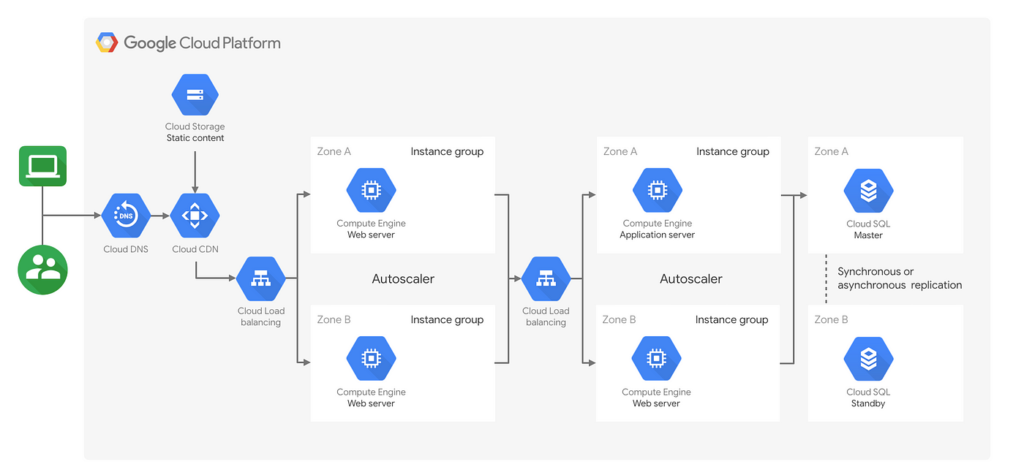
Integrating GCP App Engine with Other Services
Using Cloud Storage for file uploads and storage
Cloud Storage is a powerful service offered by GCP that allows you to store and access files in a scalable and secure manner. By integrating GCP App Engine with Cloud Storage, you can leverage its capabilities for file uploads and storage in your web application. This allows you to securely handle user-uploaded files, serve static assets, and store application data. By utilizing Cloud Storage, you can ensure efficient and reliable file handling in your web application.
Integrating with Google Cloud SQL for database needs
Google Cloud SQL is a fully-managed relational database service offered by GCP. By integrating GCP App Engine with Cloud SQL, you can leverage its capabilities for managing and scaling your application’s database needs. Cloud SQL provides support for popular database engines like MySQL and PostgreSQL, ensuring compatibility with a wide range of applications. By utilizing Cloud SQL, you can ensure secure and scalable data storage and management in your web application.
Leveraging Pub/Sub for event-driven architectures
Pub/Sub is a messaging service offered by GCP that allows you to create event-driven architectures in your web application. By integrating GCP App Engine with Pub/Sub, you can build scalable and decoupled systems that can handle asynchronous communication and perform tasks based on events. Pub/Sub provides reliable and scalable messaging between independent components of your application, allowing for flexibility and scalability. By leveraging Pub/Sub, you can build event-driven architectures that can handle varying levels of traffic and workload efficiently.
Integrating with Firebase services for real-time features
Firebase is a suite of development tools and services offered by Google that can enhance the functionality and user experience of your web application. By integrating GCP App Engine with Firebase services, you can leverage features like real-time databases, authentication, cloud messaging, and hosting. This allows you to add real-time functionality, user authentication, and push notifications to your web application. By integrating with Firebase services, you can enhance the interactivity and responsiveness of your web application.
Optimizing Performance of GCP App Engine Applications
Understanding performance bottlenecks
Understanding performance bottlenecks is essential for optimizing the performance of your web application. GCP App Engine provides several tools and features that can help you identify and address performance issues. Stackdriver Profiler, for example, allows you to profile your application’s code and identify areas that require optimization. Additionally, GCP App Engine also provides tools for monitoring your application’s performance metrics and analyzing its resource usage. By understanding the performance bottlenecks, you can implement targeted optimizations and improve the overall performance of your web application.
Implementing caching strategies
Implementing caching strategies is an effective way to improve the performance of your web application. GCP App Engine offers several caching options that can be used to cache frequently accessed data or responses. Cloud Memorystore, for example, is a fully managed in-memory data store that provides high performance and scalability. Additionally, you can also leverage edge caching using a Content Delivery Network (CDN) like Cloud CDN. By implementing caching strategies, you can reduce the response times of your web application and improve its overall performance.
Using request and response optimizations
Request and response optimizations can greatly improve the performance of your web application. GCP App Engine provides several features and best practices that can be used to optimize the handling of incoming requests and outgoing responses. This includes techniques like compressing responses, enabling HTTP/2, implementing request batching or pipelining, and optimizing network configurations. By implementing these optimizations, you can reduce the response times and improve the overall performance of your web application.
Optimizing database queries
Optimizing database queries is crucial for improving the performance of your web application. GCP App Engine offers several tools and techniques that can be used to optimize database queries. This includes creating appropriate indexes, minimizing the number of queries, using caching for frequently accessed data, and optimizing the data model to reduce joins or unnecessary lookups. By implementing these optimizations, you can ensure that your application’s database queries are executed efficiently and quickly, resulting in improved performance.
